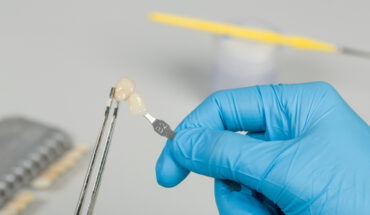
Toothache Pain, Cracked Teeth & Gum Disease are frequent, but they may usually be prevented by brushing and flossing regularly. Flossing, brushing and excellent nutrition is crucial for keeping your gums, teeth, and surrounding bones healthy. Brush your teeth twice a day with fluoride toothpaste that has been approved by the American Dental Association (ADA). Floss or use an interdental cleaner every day to clean between your teeth. For tooth-related problems, sometimes they call it to sleep dentistry or twilight or sedation dentistry.
But if you want to know among the Toothache Pain, Cracked Teeth & Gum Disease which one is more painful and what’s the reason behind it, then keep reading.
Gum disease
Healthy gums are pink and do not bleed easily. Your gums may bleed if you rub your teeth and gums too forcefully, try a toothbrush with a firm bristle, or clamp dental floss tightly against your gums. Brush your teeth gently with a soft-bristled toothbrush and floss thoroughly to help prevent bleeding gums.
Gum disease, often known as gingivitis, causes red, swollen, and bleeding gums. Several people put off treating gingivitis because it hardly causes pain. Gum disease, if left untreated, can bring more crucial difficulties to the gum tissue.
Periodontitis is a terrible gum disease inflicted by long-term disorders of the bones, gums, and other tissues that encircle and support the teeth. It can continue to formulate until the teeth-supporting bones are endangered. Teeth may become loose and fall out at this point, or they may need to be removed. Early medication for gum infection is essential to prevent tooth loss.
Cracked Teeth and Toothache Pain
Sometimes you may have tooth pain when you touch a tooth or eat or drink sweet or sour foods. Mild sensitivity can be affected by shrunken gums or a worn-down tooth. Acceptable to severe sensitivity can infer a tooth has broken down, a dental cavity is existing, or stuffing has been lost. The tooth can be conserved by going to the dentist for medication. Many doctors treat your tooth problems so efficiently that they are always proclaiming they are the most gentle dentists.
Tooth decay is the most prevalent cause of toothache, albeit a toothache may not be present in the early stages of decay. A toothache could be caused by a variety of factors, including:
A disorder that affects the tooth or the area around it. Near or on the side of the aching tooth, a swollen, red, painful bump may appear.
A tooth that hasn’t broken through the gum line. Gums that are red, severe, and swollen are familiar. This tooth’s surrounding area might ache and be exceedingly uncomfortable.
Difficulties with or injury to the nerves in the tooth’s centre can be caused by harming the face or grinding or chewing the teeth.
Lastly,
Gum infection is boosted when you smoke or use other tobacco commodities. Because tobacco use modifies the typical bleeding-resistant reaction, you may not have bleeding or swollen gums. Chewing tobacco or snuffing can cause the gums to recede in the area where the tobacco is introduced. Tobacco products create constant inflammation, which raises your risk of mouth cancer.




